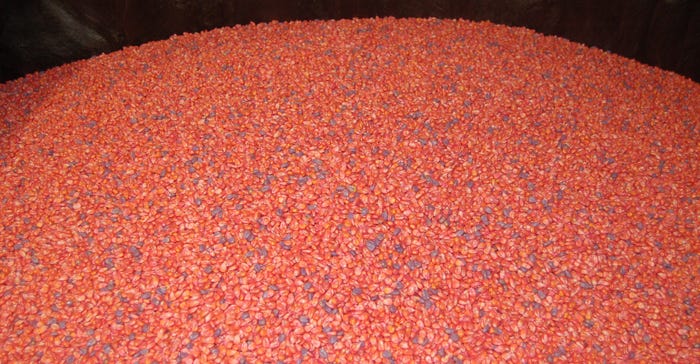
Unless you’ve explained why there are two colors of seed corn in some bags to your grandchild or a new landowner lately, you may be so used to seeing two colors that you forget why they’re there. Perhaps it’s time for a refresher on the reason for refuge in Bt corn.
Steve Gauck, a regional agronomy manager for Beck’s, based near Greensburg, Ind., says that refuge was originally required when Bt corn was introduced. It amounts to corn without Bt insect resistance and is usually a hybrid with similar characteristics and maturity to the primary hybrid with Bt resistance planted in the field.
The theory is that if corn borers are still present and have susceptible corn to feed on, resistance to the Bt trait will be slower to develop. How much refuge corn is required, often either 5% or 10%, depends on the Bt trait and other factors. Bt insect resistance traits are available today to control corn borers, corn rootworms and several other lesser insect pests. Bt traits that control corn borer are typically denoted as aboveground insect resistance, with Bt traits controlling corn rootworms providing protection against belowground insects.
Firm reminder
“That is probably a refuge plant,” Gauck remarked while walking a cornfield with a grower earlier this summer. The farmer was impressed. After all, when corn is tasseled out, unless you dig up plants, you no longer know which color of seed was planted. How did he know?
“Look for the characteristic shot hole damage which occurs while young leaves are still in the whorl,” Gauck says. “That is characteristic of corn borer feeding damage. A corn borer larva chewed through that leaf while it was still wrapped up in the whorl. That’s what creates the pattern of four holes in a line in a leaf once it unrolls.”
On this day, Gauck found two suspected refuge plants in a row. “It’s random because they are mixed in the seed box,” he explains. “It’s not unusual to get more than one back to back in a row.”

He adds that although it’s possible that a corn borer could produce those feeding holes on a GMO plant, it should not happen often. The more likely scenario is that it’s a refuge hybrid without protection against corn borer, he says.
“The other lesson you should take away from finding a plant or two here and there with corn borer feeding damage is that corn borer is still here,” Gauck says. “It’s more of a concern in the western Corn Belt, but they can still cause problems everywhere, especially if weather patterns during the season are favorable for them. It’s not like they’ve disappeared. It’s good to remember that fact when you’re making seed selection decisions and mapping insect control strategies for next year.”
About the Author(s)
You May Also Like




